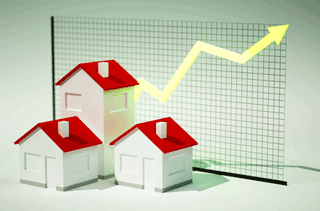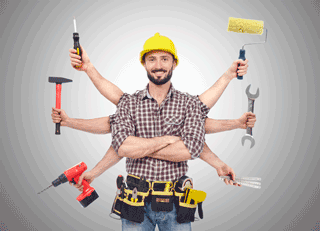Quote Of The Week
“There are clearly a number of factors at play, including some buyer hysteria, but one of the main reasons for our booming market conditions is easier access to credit, which was simply not the case two years ago when rates were also low.”
PIPA Chairman Peter Koulizos
Vacancy Rates Fall to 10yr Low
 The national vacancy rate has hit a 10-year low, with new figures revealing it has dropped to 1.6% – but with six of the eight capital cities well below that level.
The national vacancy rate has hit a 10-year low, with new figures revealing it has dropped to 1.6% – but with six of the eight capital cities well below that level.
SQM Research figures reveal the total number of vacancies in October was 56,953 properties, down from 59,345 in September.
Vacancy rates are lowest in Hobart at just 0.4%, while they’re below 1% in Perth, Adelaide, Canberra and Darwin, and slightly above 1% in Brisbane.
Sydney (2.6%) and Melbourne (3.3%) have the highest vacancies, but they’re higher still in the CBDs (7.5% in Sydney and 8% in Melbourne).
SQM managing director Louis Christopher says the last time the national vacancy rate dropped so low was in March 2011.
He says vacancy rates are still very tight in most regional centres and some towns have no vacancies at all.
Rising Rates Don’t Burst Markets
 Concerns that future interest rate rises will dampen property market activity have been quashed by Property Investment Professionals of Australia (PIPA) research.
Concerns that future interest rate rises will dampen property market activity have been quashed by Property Investment Professionals of Australia (PIPA) research.
The PIPA analysis of five periods of increasing cash rate movements since 1994 shows house prices continue to rise even after rate rises.
PIPA chairman Peter Koulizos says it is usually affordability constraints, economic conditions and consumer sentiment that affect property prices.
He says there has been a lot of speculation in the past 18 months that the historic low interest rates in Australia are what is driving property prices so high.
“There are clearly a number of factors at play, including some buyer hysteria, but one of the main reasons for our booming market conditions is easier access to credit, which was simply not the case two years ago when rates were also low,” Koulizos says.
Many Protected Against Rate Hike
 The Reserve Bank of Australia doesn’t think an interest rate rise will have a detrimental impact on borrowers across Australia.
The Reserve Bank of Australia doesn’t think an interest rate rise will have a detrimental impact on borrowers across Australia.
RBA assistant governor for economics Luci Ellis told a parliamentary hearing that most people pay more off their mortgage than is required, particularly recently as many households have been spending less during Covid lockdowns.
She says people often put that money into offset and redraw mortgage accounts, so if rates do eventually rise they won’t have to raise their repayments because they have already paid off more than they needed to.
While she doesn’t think there is an overall shortage of housing in Australia, Ellis says there are some things that can be done to make the market more responsive. “These include speeding up planning systems to reduce general inefficiencies, improving transport infrastructure and lowering the cost of new construction.”
Demand For Tradies Booms
 A surge in renovations by cashed-up Australian home-owners is behind a massive increase in demand for tradies.
A surge in renovations by cashed-up Australian home-owners is behind a massive increase in demand for tradies.
Tradie website Hipages is forecasting $34 billion worth of tradie jobs in the next six months as people spend on improving their homes. It says 39% of Australians saved more than usual during lockdown, with an average of $800 a month going into savings. Of those home-owners, 64% plan to do work on their homes.
Non-executive chair Chris Knoblanche told the Hipages AGM there was an “unprecedented” demand for tradies in Australia. He says the renovation activity is underpinned by rising home values and strong household liquidity.
“We continue to spend more time at home and, as property values rise to record levels, discretionary spending on the home has increased in step,” Knoblanche says.
He says demand for renovations and new homes, causing material shortages, has resulted in increased building costs which went up 3.8% in the September Quarter.
Buyers Search For Swimming Pools
 Working from home may have seen an increase in demand for home offices, but it’s swimming pools that home-buyers search for the most. Analysis by Domain found “pool” was the most searched term on its listings in October across all capital cities.
Working from home may have seen an increase in demand for home offices, but it’s swimming pools that home-buyers search for the most. Analysis by Domain found “pool” was the most searched term on its listings in October across all capital cities.
According to the Swimming Pool & Spa Association of Australia, 2021 has been the industry’s busiest year ever. Chief executive Linsday McGrath, says: “There’s never been a higher demand in the history of swimming pools and spas in Australia.”
McGrath says demand is 50% higher than last year and as a result it’s taking up to 12 months for owners to get their pools. Those not keen to wait have driven up demand and prices for existing properties with pools.
Eview Group selling agent Dena Kibblewhite says pools are a big drawcard. “They’re looking for lifestyle homes where they have resort-style living in case of another lockdown. It’s really future-proofing your family in the current environment.”




